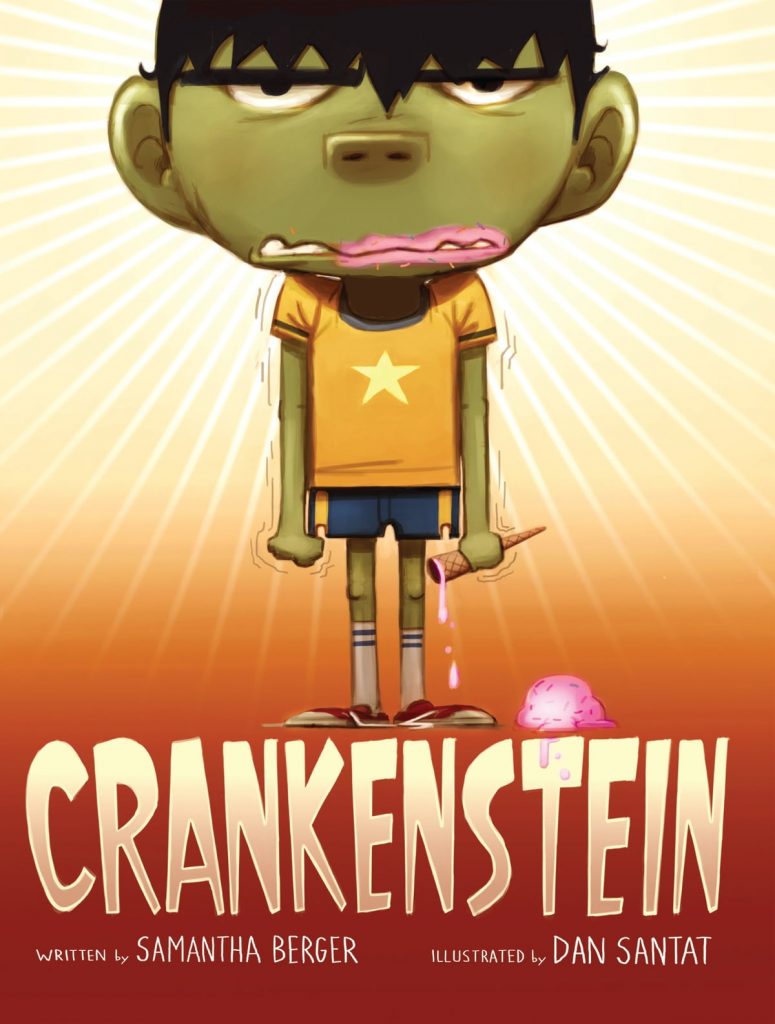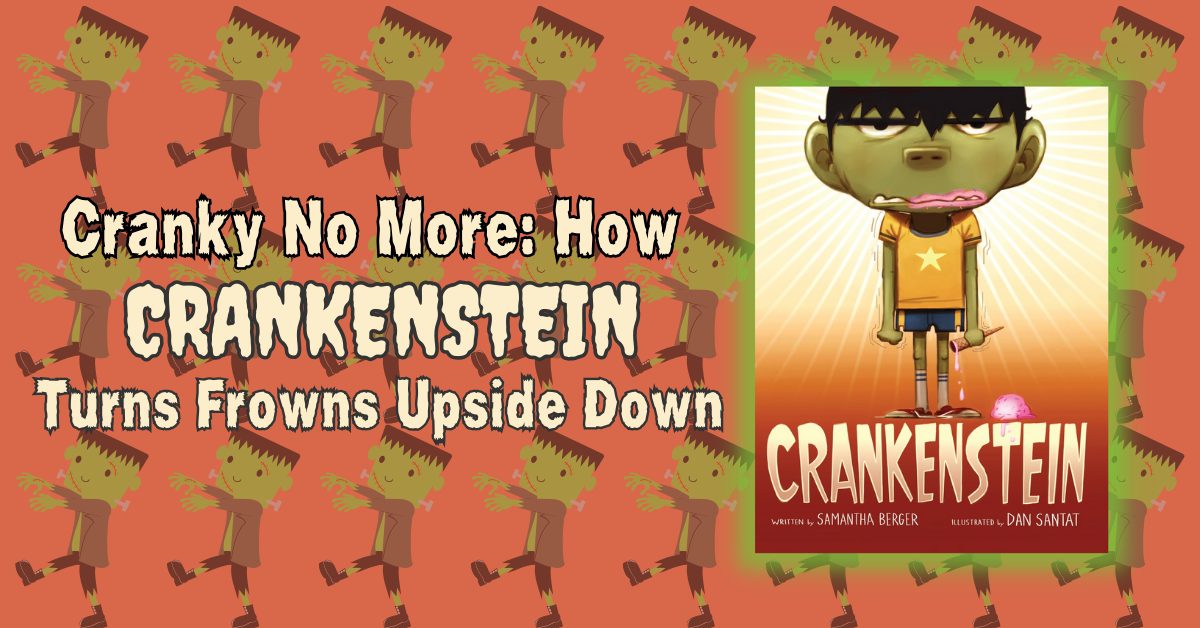In the realm of children’s literature, few books have the magical ability to navigate the intricate landscape of emotions with both simplicity and depth. Crankenstein, penned by Samantha Berger and brought to life through the vivid illustrations of Dan Santat, stands as a remarkable example. Beyond its vibrant colors and playful characters, this charming picture book delves into the universality of human feelings, using humor as a guiding light to illuminate the often perplexing realm of emotions. Embark with us on a journey through the pages of Crankenstein as we explore how this imaginative tale transforms everyday crankiness into a heartwarming lesson on empathy, understanding, and the resilience of the human spirit.
Table of Contents [CLICK HERE TO OPEN]

Crankenstein
The perfect cure for a cranky kid, illustrated by the #1 New York Times bestselling and Caldecott-winning artist, Dan Santat.
BEWARE OF CRANKENSTEIN! He’s a little monster of crankiness that no one can destroy! MEHHRRRR!!! He may look like any ordinary boy, but when faced with a rainy day, a melting popsicle, or an early bedtime, one little boy transforms into a mumbling, grumbling Crankenstein. When Crankenstein meets his match in a fellow Crankenstein, the results could be catastrophic–or they could be just what he needs to brighten his day! This hilarious and relatable tale of grumpiness gone awry will turn toddler tantrums to giggles in no time.
About The Author
Samantha Berger is a prolific and imaginative author who has captured the hearts of readers young and old with her engaging storytelling. With a penchant for weaving tales that resonate on both emotional and humorous levels, Berger has established herself as a prominent figure in the realm of children’s literature. Her work often centers on themes of empathy, self-discovery, and the exploration of emotions—themes that mirror the intricacies of the human experience.
Berger’s literary journey began with a deep passion for storytelling and a keen understanding of the power of words. Her ability to infuse her narratives with relatable characters and situations has earned her a dedicated following among young readers, parents, and educators alike. Through her books, she invites her audience to embrace their feelings, learn from their experiences, and find joy in unexpected places.
Crankenstein, a collaborative masterpiece with illustrator Dan Santat, exemplifies Berger’s gift for merging humor and emotion. The book’s lasting impact has resonated far beyond its pages, as it encourages open discussions about feelings and helps young readers navigate the complexities of their emotional landscapes. Samantha Berger’s contributions to children’s literature continue to inspire, empower, and entertain. With each story she tells, she invites us to embark on literary adventures that foster empathy, self-expression, and a deeper connection to the world around us.
Overview
Crankenstein, a beloved children’s picture book written by Samantha Berger and illustrated by Dan Santat, is a delightful exploration of emotions and humor that resonates with both young readers and adults alike. With its imaginative storytelling and relatable characters, the book offers a unique perspective on the ups and downs of emotions, showcasing the power of humor in addressing even the crankiest of moods.
A Tale of Crankiness and Imagination
At the heart of Crankenstein lies a relatable premise: waking up on the wrong side of the bed and feeling like a Crankenstein. The story follows the journey of a young protagonist who experiences a day filled with grumpiness and irritability. Through vivid descriptions and expressive illustrations, the book vividly captures the emotions and thoughts that arise when someone is feeling less than cheerful.
Emotions Explored
The brilliance of Crankenstein lies in its ability to tap into the complex world of emotions that children and adults experience. It provides a safe and engaging platform for readers to connect with the protagonist’s cranky state of mind. By portraying this mood in a lighthearted manner, the book helps young readers understand that it’s perfectly normal to feel cranky at times.
The Role of Humor
One of the standout features of Crankenstein is its use of humor to address emotions. The illustrations by Dan Santat play a pivotal role in bringing the story to life. The exaggerated facial expressions and imaginative depictions of the protagonist’s crankiness not only make readers laugh but also offer a valuable lesson in finding humor even in challenging situations. The book cleverly showcases that sometimes, a good laugh can be the antidote to a bad mood.
Empathy and Understanding
As the story unfolds, readers get the chance to empathize with the protagonist’s feelings of crankiness. This empathy fosters an understanding that emotions are universal and that it’s okay to feel grumpy from time to time. The book encourages open conversations about emotions between children and adults, allowing for a deeper connection and communication about how they’re feeling.
Conclusion
Crankenstein is more than just a children’s book; it’s a charming exploration of emotions, humor, and the human experience. Through its relatable story and playful illustrations, the book offers a window into the world of emotions that children often navigate. It teaches valuable lessons about empathy, the power of humor, and the importance of embracing our feelings—even the cranky ones. As readers young and old turn its pages, Crankenstein reminds us that we all have a little bit of Crankenstein in us, and that’s perfectly okay.
Our Review
Rating: ★★★★☆ (4/5)
Crankenstein by Samantha Berger and illustrated by Dan Santat is a delightful journey into the whimsical world of emotions. Through its clever storytelling and expressive visuals, this picture book transforms everyday crankiness into an opportunity for laughter and understanding.
At its core, Crankenstein captures a relatable moment we’ve all experienced: waking up on the wrong side of the bed and feeling like a grouch. The genius of this book lies in its ability to make readers of all ages chuckle at the crankiness we sometimes can’t shake. Dan Santat’s illustrations are a perfect match, bringing the protagonist’s grumpiness to life with vivid and exaggerated expressions.
The story gently reminds us that it’s okay to feel cranky sometimes, even though the world may seem a bit topsy-turvy. What makes Crankenstein truly special is its emphasis on humor as a remedy for bad moods. As the protagonist navigates their cranky day, readers are treated to comical scenarios that infuse levity into the story.
Moreover, Crankenstein subtly promotes empathy and understanding. Young readers learn that they’re not alone in their grumpy moments, fostering a sense of camaraderie. It opens doors for conversations about emotions, allowing children to express their feelings in a safe and constructive way.
The only reason Crankenstein doesn’t receive a full five stars is its relatively short length, leaving readers craving more of the whimsical world it creates. Yet, this brevity also makes it an ideal bedtime story or a quick pick-me-up during a grumpy day.
In conclusion, Crankenstein is a charming and humorous tale that reminds us all to find the laughter in our moments of crankiness. It’s a must-read for families and classrooms alike, offering valuable lessons on the universality of emotions and the power of a good laugh.
Crankenstein Read Aloud
Frequently Asked Questions
What is the main idea of Crankenstein?
The main idea of Crankenstein is to explore the concept of crankiness and grumpiness in a humorous and relatable way, showing that it’s okay to have bad days and that humor can help improve one’s mood. It’s a children’s picture book that uses storytelling and illustrations to convey these ideas.
What reading level is Crankenstein?
Crankenstein is typically suitable for children at a preschool to early elementary school reading level, generally around ages 3 to 8. However, reading levels can vary, so it’s best to assess a child’s individual reading abilities and interests.
What age is Crankenstein for?
Crankenstein is suitable for children typically between the ages of 3 to 8. However, age suitability can vary depending on individual reading levels and interests.
How many pages does Crankenstein have?
Crankenstein is a picture book with approximately 40 pages.
As we close the pages of Crankenstein, we emerge with a newfound appreciation for the art of storytelling and its ability to illuminate the human experience. Through humor, relatability, and vibrant imagery, this enchanting children’s book invites us to embrace our emotions, celebrate our shared feelings, and find solace in the power of laughter. Crankenstein reminds us that within every cranky moment lies the potential for connection, growth, and a touch of magic. Just as the young protagonist discovers, our journey through emotions is a universal voyage—one that unites us all in the colorful tapestry of life.




